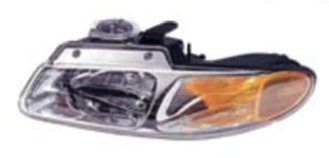Disposal and Recycling of HSC Materials
Keywords:
environment, recycling, composite, high-speed craftAbstract
The introduction gives an overview of current IMO activities concerning the disposal of ships at the end of their life-cycle and an overview of composite materials applications in ships. After a brief discussion of relatively unproblematic aluminum alloys, the article focuses on problems for composite materials. There is little experience for end of life treatment of composites in general and in the shipbuilding industry in particular. New legislation might regulate handling and disposal of these materials even further. The article identifies existing solutions as well as open questions.Downloads
References
BEAUCHAMPS, B.; BERTRAM, V. (2006), Quo vadis, navy – Trends for future high-performance naval platforms, 5th Conf. High-Performance Marine Vehicles (HIPER), Launcerston, pp.364-373.
BRYCE, R. (2005), Recycling high speed ferries and ideas for the future, RINA Conf. Recycling of Ships and Other Marine Structures, London, pp.107-114.
DAVIDSON, J. (2006), Carbon fiber composite recycling – An industry perspective, Composites World, http://www.compositesworld.com/hpc/issues/2006/September/1410.
FACH, K. (2002), High Speed Craft in service, 3rd Conf. High-Performance Marine Vehicles (HIPER), Bergen, pp.145-152.
FACH, K.; ROTHE, F. (2000), Classification experience with lightweight ship structures, RINA Conf. Lightweight Construction Latest Developments, London.
FUHRMANN, A.; GREINER, S.; KORBEL, T. (2007), Entsorgung von Faserverbundwerkstoffen und Einsatz der Rezyklate, Report for MaVeFa, Hochschule Bremen (in German)
http://www.faserverbund-verwertung.de/mavefa.php?site=mavefa.
GRAMANN, H.; KÖPKE, M.; FLÜGGE, M.; GRAFE, W. (2007), Data management for better ship-care and recycling, 6th Conf. Computer and IT Applications in the Maritime Industries (COMPIT), Cortona, pp.33-41.
HAYASHI, S.; YAMANE, K. (1998), Study on the development of the recycling technology of waste FRP boats, Papers of Ship Research Institute 35(3) (in Japanese).
HAYASHI, S. (1989), Floating disposal system for waste FRP boats, 16th Joint Meeting UJNR Marine Facilities Panel, Washington, pp.115-122.
HAYASHI, S.; YAMANE, K. (1994), Development of movable disposal system for waste FRP boats, 19th Joint Meeting UJNR Marine Facilities Panel, Tokyo, pp.224-231.
HEDLUND-ÅSTRÖM, A.; LUTTROP, C.; REINHOLDSSON, P. (2005), Environmentally friendly recycling of FRP-sandwich ship hulls, RINA Conf. Recycling of Ships and Other Marine Structures, London, pp.119-126.
HEDLUND-ÅSTRÖM, A.; OLSSON, K.A. (1997), Recycling and LCA studies of FRP-sandwich structures, 2nd North European Engineering and Science Conf. – Composites and Sandwich Structures, EMAS Ltd, Stockholm.
IMO (2007a), Recycling of ships – Draft guidelines for the development of the Inventory of hazardous materials, MEPC 56/3/2.
IMO (2007b), Recycling of ships – Draft guidelines for the development of the Inventory of hazardous materials, MEPC-ISRWG 2/2.
IMO (2007c), Ship recycling, IMO guidelines for ship recycling, IMO-I685E.
ISO (1996), Plastics – Symbols and abbreviated terms, ISO 1043:1996.
ISO (2000), Plastics – Generic identification and marking of plastic products, ISO/DIS 11469:2000.
LAMB, T. (2003), Design/production integration, Ch.14 in Ship Design and Construction (Ed. T. Lamb), SNAME.
LANDAMORE, M.J.; BIRMINGHAM, R.W.; DOWNIE, M.J.; WRIGHT, P.N.H. (2007), Sustainable technologies for inland leisure craft, J. Eng. for the Maritime Environment 221/M3, pp.97-114.
MAREK, A.; BOLZE, K.; JOACHIM, T.; JUNG, O.; WIDDECKE, H. (2000), Recycling von Verbundwerkstoffen im Automobilbau, Workshop Kunststoffrecycling im Automobilbau, Wolfsburg (in German).
MÜLLER, L. (1990), Faserverstärkte Kunststoffe im Boots- und Schiffbau, Handbuch der Werften XX, Hansa-Verlag Hamburg (in German).
N.N. (2003), Composite recycling and disposal – An environmental R&D issue, Boeing Environmental Technotes 8/4.
UMAIR, S. (2006), Environmental impacts of fiber composite materials – Study of life cycle assessment of materials used for ship superstructure, Master Thesis, Royal Institute of Technology, Stockholm.
VDI (2002), Recyclingorientierte Produktentwicklung (Recycling oriented product development), VDI Guideline 2243, VDI-Verlag.

How to Cite
Issue
Section
License
The authors who publish in this Journal certify that:
- The work submitted for publication in The Ship Science and Technology journal, was written by the author, given that its content is the product of his/her direct intellectual contribution.
- All data and references to material already published are duly identified with their respective credits and are included in the bibliographic notes and quotations highlighted as such.
- All materials submitted for publication are completely free of copyrights; consequently, the author accepts responsibility for any lawsuit or claim related with Intellectual Property Rights thereof, Exonerating of responsibility to The Science and Technology for the Development of Naval, Maritime, and Riverine Industry Corporation, COTECMAR.
- In the event that the article is chosen for publication by The Ship Science and Technology journal, the author state that he/she totally transfers reproduction rights of such to The Science and Technology for the Development of Naval, Maritime, and Riverine Industry Corporation, COTECMAR.
- The authors retain the copyright and transfer to COTECMAR the right of publication and reproduction of the work which will be simultaneously subject to the Creative Commons Attribution License (CC -BY) , which allows the license to copy, distribute, display and represent the work and to make derivative works as long as it recognizes and cites the work in the manner specified by the author or licensor.
- For more information about the Creative Commons Attribution License (CC -BY) and his use and scope, please visit the following web page https://creativecommons.org/licenses/by-sa/4.0/legalcode








